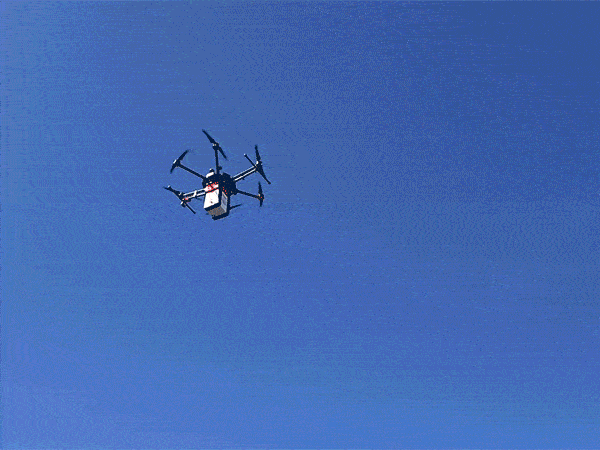Drone delivery really only seems practical for two things: take-out and organ transplants. Both are relatively light and also extremely time sensitive. Well, experiments in flying a kidney around Baltimore in a refrigerated box have yielded positive results — which also seems promising for getting your pad thai to you in good kit.
The test flights were conducted by researchers at the University of Maryland there, led by surgeon Joseph Scalea. He has been frustrated in the past with the inflexibility of air delivery systems, and felt that drones represent an obvious solution to the last-mile problem.
Scalea and his colleagues modified a DJI M600 drone to carry a refrigerated box payload, and also designed a wireless biosensor for monitoring the organ while in flight.
After months of waiting, their study was assigned a kidney that was healthy enough for testing but not good enough for transplant. Once it landed in Baltimore, the team loaded it into the container and had it travel 14 separate missions of various distances and profiles. The longest of these was three miles, a realistic distance between hospitals in the area, and the top speed achieved was 67.6 km/h, or about 42 mph.
Biopsies of the kidney were taken before and after the flights, and also after a reference flight on a small aircraft, which is another common way to transport organs medium distances.
The results are good: despite the potential threats of wind chill and heat from the motors of the drone (though this was mitigated by choosing a design with a distal motor-rotor setup), the temperature of the box remained at 2.5 degrees Celsius, just above freezing. And no damage appeared to have been done by the drones’ vibrations or maneuvers.
Restrictions on drones and on how organs can be transported make it unlikely that this type of delivery will be taking place any time soon, but it’s studies like this that make it possible to challenge those restrictions. Once the risk has been quantified, then kidneys, livers, blood, and other tissues or important medical supplies may be transported this way — and in many cases, every minute counts.
One can also imagine the usefulness of this type of thing in disaster situations, when not just ordinary aircraft but also land vehicles may have trouble getting around a city. Drones should be able to carry much-needed supplies — but before they do, they should definitely be studied to make sure they aren’t going to curdle the blood or anything.
The specifics of the study are detailed in a paper published in the IEEE Journal of Translational Engineering in Health and Medicine.
from Gadgets – TechCrunch https://ift.tt/2FxtALs


Remo Repair RAR Crack 2021 is a simple but useful program to repair RAR files. Compressors are designed to compress a variety of information into a zip file.
ReplyDelete